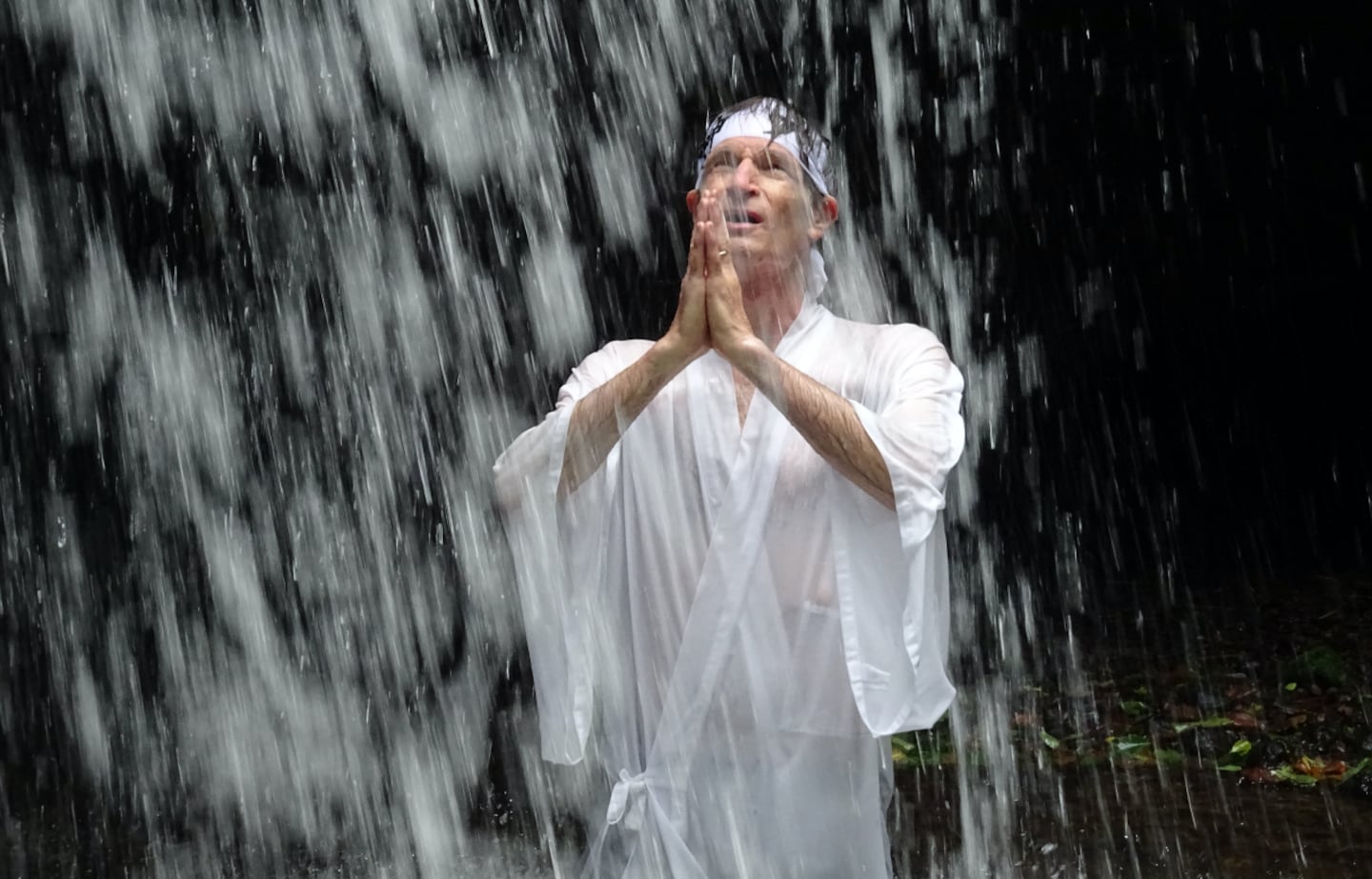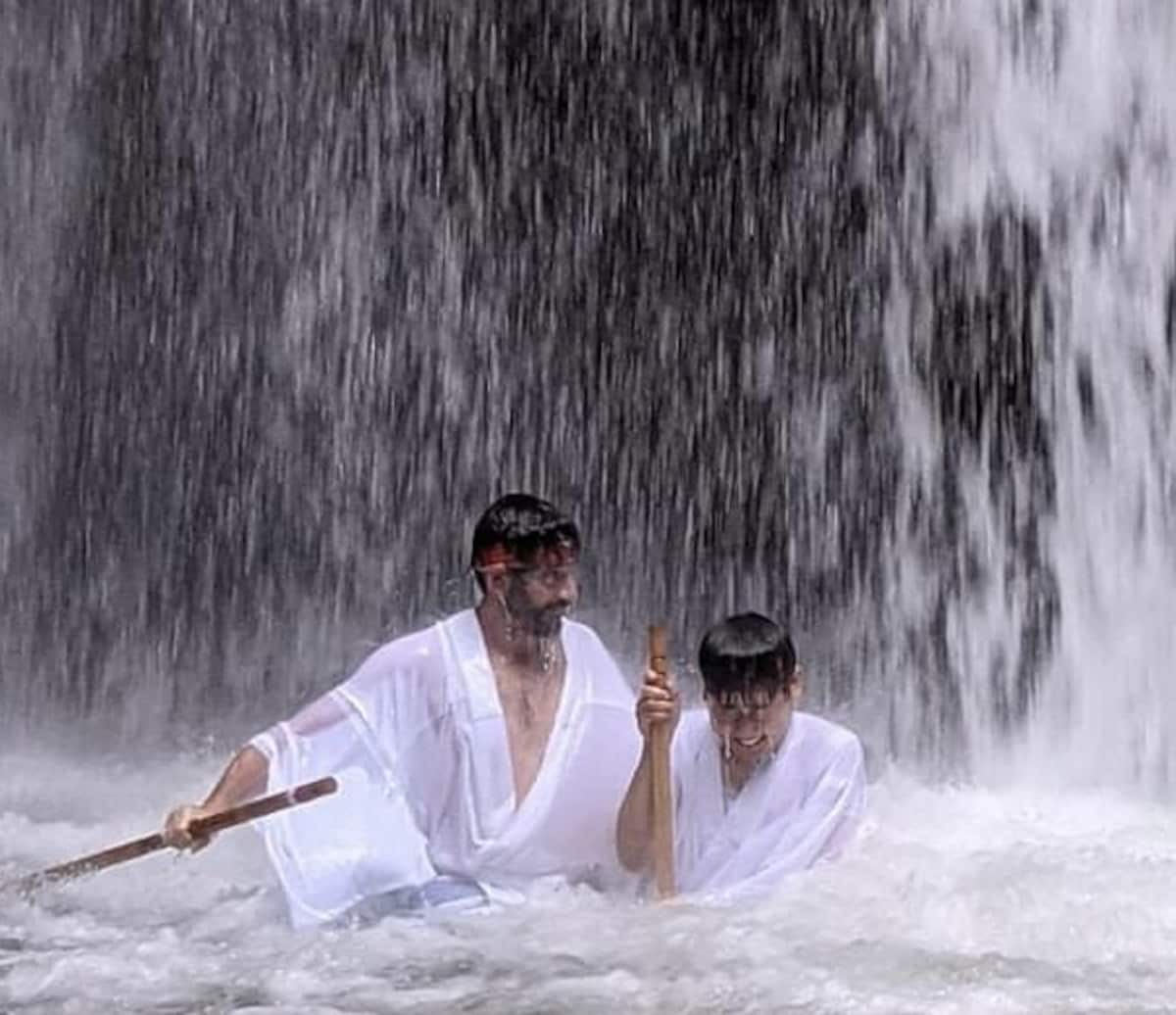Takigyo: Japanese Waterfall Meditation

Waterfall meditation is a rare practice that samurai and ascetic Japanese Buddhists and Shintoists engaged in for centuries. Whether translated as waterfall meditation or training, it is a shocking, exhilarating, and memorable introduction to an extraordinary form of spiritual development and self-control.
By Greg GoodmacherAs I walked toward the center of the cascading waterfalls, severe coldness gripped my feet, and the rhythmic chants of a Shinto priest disappeared under the sounds of torrents pounding the rocky ground. To gain insight into the old custom of takigyo, an ascetic aspect of Japanese culture, I was voluntarily walking into a frigid waterfall on a chilly day.
"An otherworldly atmosphere radiates from Ishigami Shrine."
Shinto priests and Buddhist monks in various areas of Japan lead visitors into the cold waters of sacred waterfalls for a natural consciousness-altering experience. However, few Japanese citizens, foreign residents, and tourists have tackled takigyo.
For my introduction, I chose the sacred grounds of Ishigami Shrine in Ooaza Nyu-nai, Aomori, for its remote location and authenticity. This shrine, founded 150 years ago, rests in a lush forest far from residences, businesses, and other buildings.
An otherworldly atmosphere radiates from Ishigami Shrine. Ishi means stone in Japanese, and kami, sometimes pronounced gami means god or spirit. Priest Shuichi Narita greeted my wife and I when we arrived. He explained we should walk up a stone staircase until we reached a huge rock resembling a mythical giant-eyed being. We were to inform the god residing in the rock of our intention to experience takigyo. Afterward, Narita would purify us in a ceremony within the main shrine building.
Purification ceremony
The priest bade us don thick white headbands, hachimaki, and loose white traditional robes, shirosozoku, for the purification ceremony before takigyo. White represents purity in Japan. The purification ceremony took place inside the main shrine building. In Japanese, the priest chanted while beating a sacred drum. He also waved a white purification wand, haraigushi, over us.
Then, we drove back along the gravel road and parked at the entrance to a steep zigzagging walking trail that led to the base of a cliff where three waterfalls plunged. Thick greenery and mist drifting from the cascades surrounded us. The priest tossed salt, also a symbol of purification, in the air and chanted sonorously over the reverberations of the torrential falls. Finally, he gestured for us to walk under the gentlest of the three cascades while he continued chanting.
" I concentrated on the wavering reflections of trees in the water by my feet, the water splashing off my body, and the whooshing noises of cascading water. "
I wish that I could write that I found serenity as I strode through the shallow river and entered the deluge, but the intense cold forced me to gasp for breath, and I struggled not to shake. I quickly walked out and stood in a ray of sunshine while my wife took her turn. Then, I decided to try again. I told myself to ignore the cold and think about being hot, but that didn't work. I was still tremendously uncomfortable.
So, I focused my attention on the surroundings. I concentrated on the wavering reflections of trees in the water by my feet, the water splashing off my body, and the whooshing noises of cascading water. Then, finally, I became comfortable despite the cold. I saw the priest through the spray. He gestured for us to move under the other two waterfalls. The torrents of the largest falls striking my back were like the arms and fists of a powerful masseuse. Staying upright was challenging but also exhilarating and, somehow, calming.
Soaking in Japanese culture

When my wife and I walked out of the waterfall, the weather had not changed. Something else had. A novel feeling of excitement flowed through my veins. Being soaked on a chilly day in a shaded forest was strangely pleasurable. The forest colors and waterfall noises seemed heightened. My body felt stronger after merely fifteen minutes or so. Was it the water, the forest spirits, self-hypnosis, or all these factors? I cannot explain why I felt stronger and happier than I had for quite some time.
Priest Narita does not speak English, but he welcomes small groups of visitors of all faiths and languages. A Japanese speaker should call the number below to reserve waterfall sessions in advance and ask for detailed directions. The location is hard to reach, which makes your journey an adventure. The best times to visit are from June to early October. Other times are too dangerous because of freezing temperatures or copious runoff from rains and melting snow. For the ceremonies and borrowed robes, a donation of 3,000 yen per person is appropriate.
There is also an option for visitors to stay overnight on tatami floors in spartan shrine lodging which lacks many modern conveniences. In the serene location, meditating and walking along wooded trails lined with sacred spots at one's own pace is the thing to do. Reaching the shrine requires driving past tiny rice-growing hamlets and then up a rough gravel road that Google maps did not show. Somewhere in the winding valleys, the internet connection disappears.
"Pearce explains waterfall immersion as a form of Shugendo training that "provides purification for the body, mind, and soul."
Richard Pearce is a guide who can introduce you to waterfall meditation/training in English. Pearce assists a Shugendo priest with waterfall experiences on Mt. Mitoku, Tottori prefecture, from July to the end of October.
Shugendo is a relatively unknown ancient Japanese religion that promotes the growth of spiritual power through acetic training and discipline. Mt. Mitoku is one of the three most sacred Shugendo sites. A core belief of Shugendo is that spirits reside within mountains and nature.

Guide assisting guest during waterfall experience
Pearce explains waterfall immersion as a form of Shugendo training that "provides purification for the body, mind, and soul." Some people, myself included, might compare takigyo to mindfulness training. Pearce commented on his experience this way: "The water flow is very strong and cold. It is very refreshing and brings you into the present moment."
Visitors seeking physical and spiritual exercise can try two different adventures in one day. The first activity is climbing Mt. Mitoku's sacred paths in the morning. Then, a priest-led waterfall experience takes place in the afternoon. Both refresh spiritually and physically. Contact Pearce via the contact form on the website below for details regarding pricing and timing.
The Details
Ishigami Shrine
Shinto Priest Shuichi Narita
Ooaza Nyu-nai
Aomori
Phone: 017-739-4584
Mt. Mitoku
Richard Pearce
Bushido Adventure Travel
bushidojapan.com
email: richard@bushidojapan.com
Phone: 81 (0) 90 9460-2912
If you cannot travel to Aomori or Tottori, other locations where you can try waterfall meditation/training include:
Oiwa-san Nisseki-ji Temple
163 Oiwa, Kamiichi, Nakaniikawa District, Toyama 930-0463
Phone: 076-472-2301
Daijouin Temple
424 Chiyo, Odawara, Kanagawa 250-0215
Phone: 0465-42-6161)
Izurusan Manganji Temple
288 Izurumachi, Tochigi, 328-0206
Phone: 0282-31-1717
More Meditation Options
Here are a few links to related articles:
Five Places to Experience Zen Meditation
Discover Your Spiritual Side at Koya-san
Purify Body and Mind with Waterfall Training



